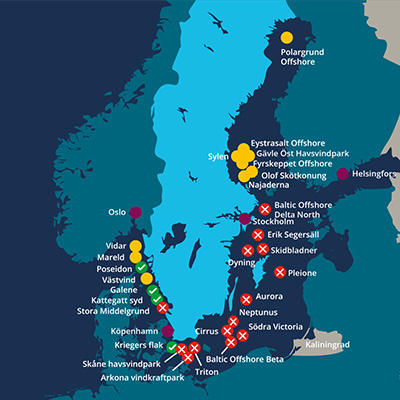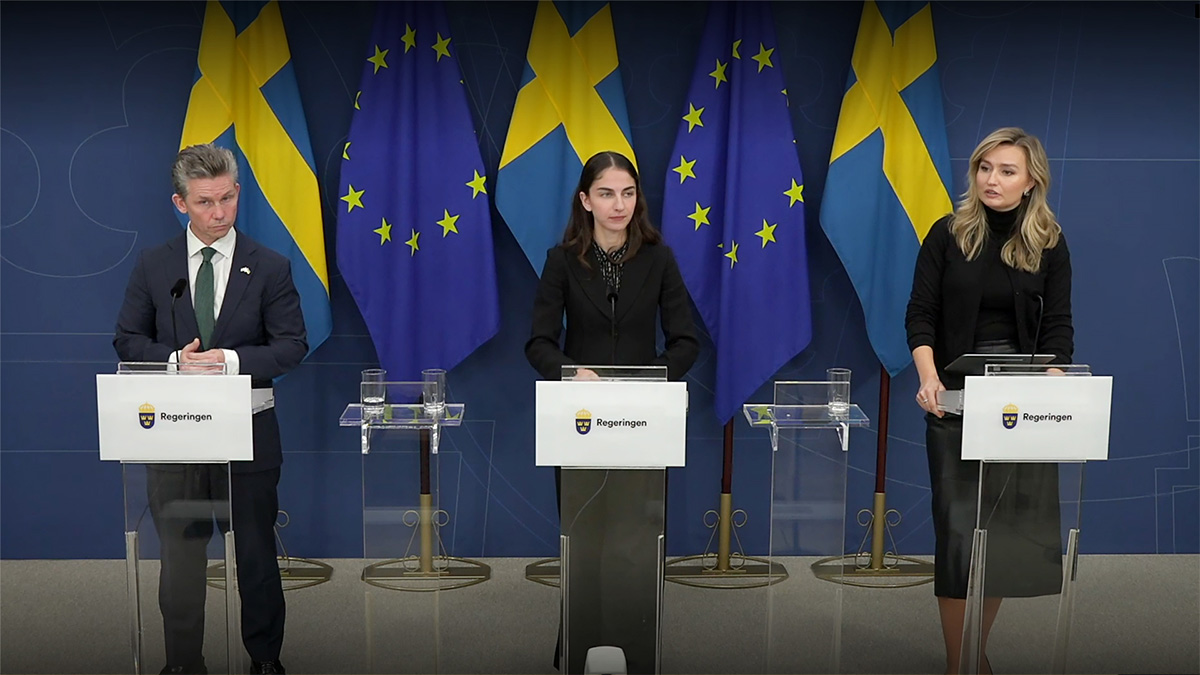News
Sweden puts its industrial competitiveness and energy security at risk
5 November 2024
Yesterday the Swedish Government cancelled 13 offshore wind projects due to military defence concerns. The announcement came unexpectedly. It is highly problematic. It is yet another setback for Sweden’s offshore wind ambitions. It undermines investors’ trust in the Swedish Government. It puts Sweden’s industrial competitiveness at risk. And it is a serious blow to Sweden’s wider energy security targets.
Yesterday the Swedish Government cancelled 13 projects with a total capacity of almost 32 GW. The Government argued these projects would lead to “unacceptable consequences for Swedens’s military defence” and decided to categorically close an entire area in the Baltic Sea for offshore wind generation. This happened without a proper assessment. Private investments of up to €47bn could be lost.
The affected offshore wind developers include OX2, Eolus, Ørsted, RWE, Freja Offshore, Deep Wind Offshore and Statkraft. Most of their projects were at an early development stage. Together they could have more than doubled Sweden’s current electricity generation capacity.
“Yet again Sweden is bottom of the class on offshore wind. The Swedish Government has been unhelpful on offshore wind for many years. But a plain ban on offshore wind development in large parts of the Baltic Sea is unheard of. This makes no sense, not least when all the other countries around the Baltic Sea want to build more offshore wind and are progressing well on it”, says Giles Dickson, WindEurope CEO.
Despite its large coastline in the Baltic Sea and the Kattegat offshore wind deployment in Sweden has been stalling for years. Today Sweden has only 0.2 GW of offshore wind farms, a fraction of the 2.6 GW neighbouring Denmark has.
According to the Swedish Wind Energy Association over 100 GW of offshore wind projects were in various stages of development in 2024. Many of these projects are being developed around the South of Sweden where the demand for renewable electricity is particularly high and set to rapidly grow further.
Overcoming military concerns

On the map: Cancelled offshore projects marked in red – © The Swedish Government.
The military in Sweden has been blocking offshore wind projects for years. This has been a major issue and the Government has not done enough to moderate this conflict.
The 7 other Governments around the Baltic Sea have chosen a totally different approach. They have established joint formats between the offshore wind industry and the military to enhance understanding and exchange and to develop solutions that work for both partners. Their militaries are embracing these collaborations.
In Poland offshore wind development is now seen as a way to enhance military surveillance capabilities. Installing radar and sonar systems placed in offshore wind farms can provide the military with additional ears and eyes to gather critical data the military needs to improve operations and ensure security.
WindEurope is currently working with NATO and European Defence Agency (EDA) to address the concerns raised by the Swedish government and its military. This includes the ‘Symbiosis’ project which aims to support the coexistence of offshore renewable energy projects and defence operations in European maritime spaces.
“European Governments mustn’t fall for the Russian intimidation and interference with energy policies. Offshore wind means more energy security and less dependence on Russian energy imports. Russia wants the EU’s successful transition to cheap and local renewables to fail. But let’s be clear: offshore wind can coexist happily with military activity”, says Giles Dickson.
Weaknesses of open-door system exposed
Another reason for this large cancellation is the Swedish approach to offshore wind development, the so-called “open-door” system. (s. below for detailed explanation) In the EU only Italy and Sweden are using “open-door” systems to develop offshore wind farms. These systems are more prone to conflicts with other uses of the sea space. In open-door systems, offshore wind developers undertake initial project development steps without prior central alignment with the interests of the military, the shipping sector and/or nature and biodiversity protection. Often different project developers also apply for overlapping offshore sites.
“Sweden already has an extremely cumbersome approach to offshore wind development and the Government has been unwilling to provide financial support to offshore wind for years. But after yesterday’s cancellations completely undermine investment security. Investors will now think twice before developing offshore wind in Sweden, particularly when neighbouring countries offer better and more reliable approaches to offshore wind development”, says Giles Dickson.
Background:
In “open-door” systems developers of new offshore wind farms apply for the development of offshore wind farms on their own initiative. This provides them with greater flexibility in choosing a project location, defining the generation capacity of their project and arranging its grid connection. Under an “open-door” procedure developers can also locate their projects close to areas with large electricity demand to facilitate corporate renewable PPAs with industrial off-takers. In sum, this can lead to more cost-competitive projects and more efficient site selection.
Most countries in the EU are using a “centralised approach” to offshore wind development in which the Government (or a government agency of some form) selects and pre-develops certain offshore wind sites based on the best wind resources and aimed at minimising adverse effects. During this planning process the Government is evaluating whether these sites have potential conflicts with other uses of the sea space. In this approach Governments usually also lead on the grid connection planning with national transmission system operators. The sites are then tendered to offshore wind developers to undertake the remaining steps of project development.


